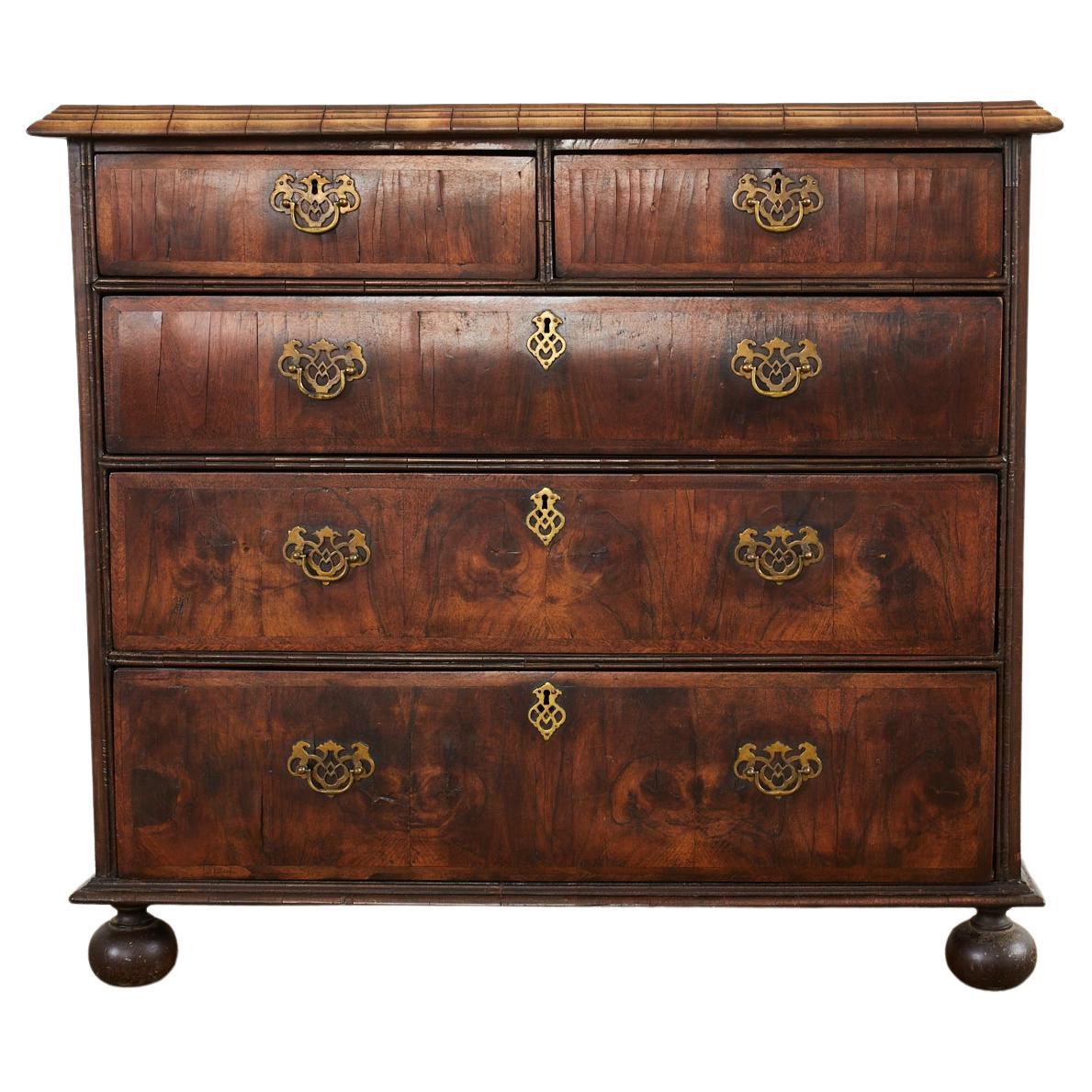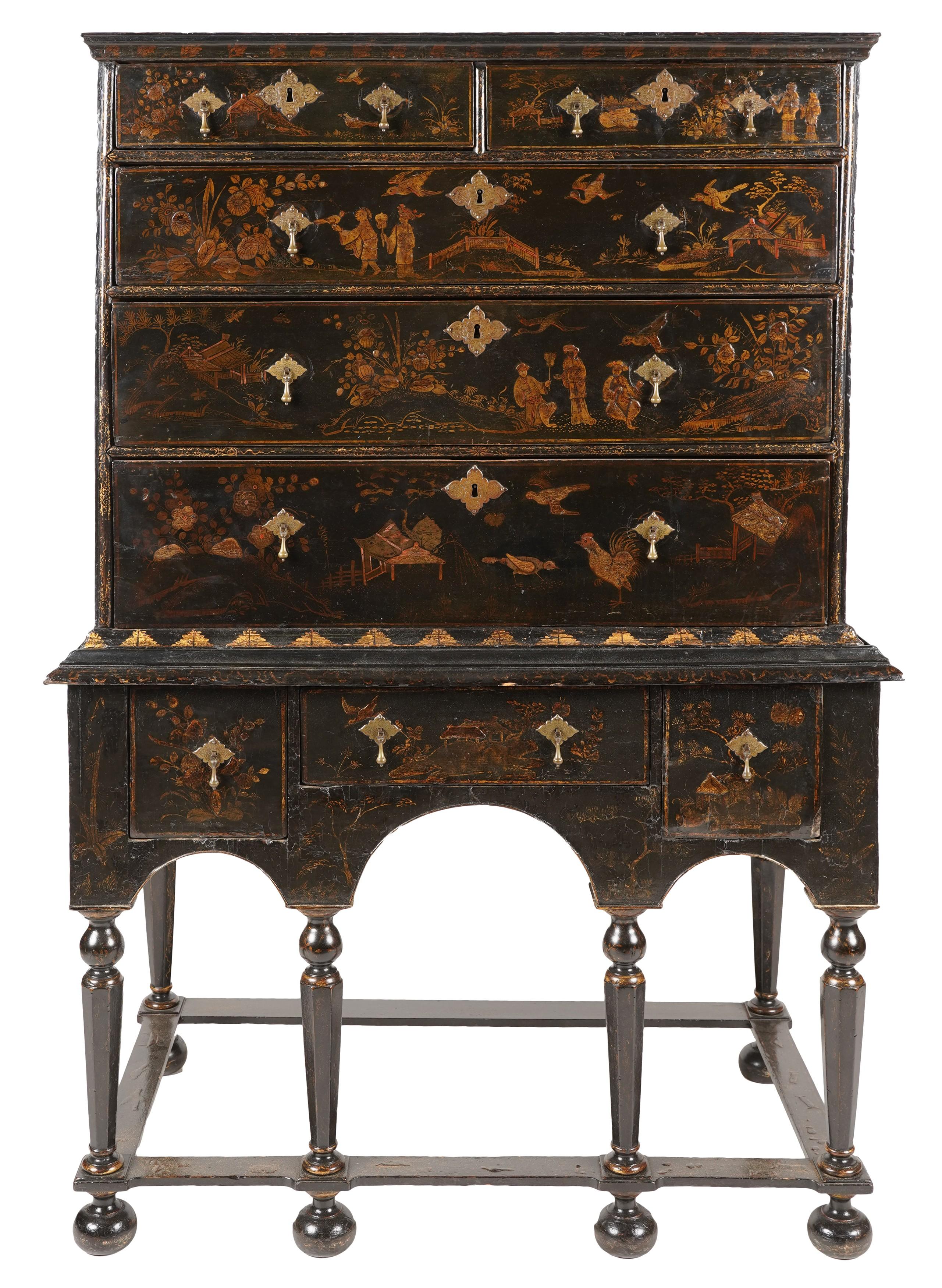
Early American (1640 to 1700)
Predominant Styles: Primitive, Jacobean, William and Mary
As the earliest colonists began to settle into communities and the focus shifted from survival to longer term settlements their furniture also shifted from mere practicality to feature more ornamentation. Ornamental carvings, finials, raised panels and turnings were distinctive features of this period. Craftsmanship of these more refined pieces included mortise and tenon joinery from locally sourced woods including pine, cherry, birch, maple, oak and fruit woods such as apple.
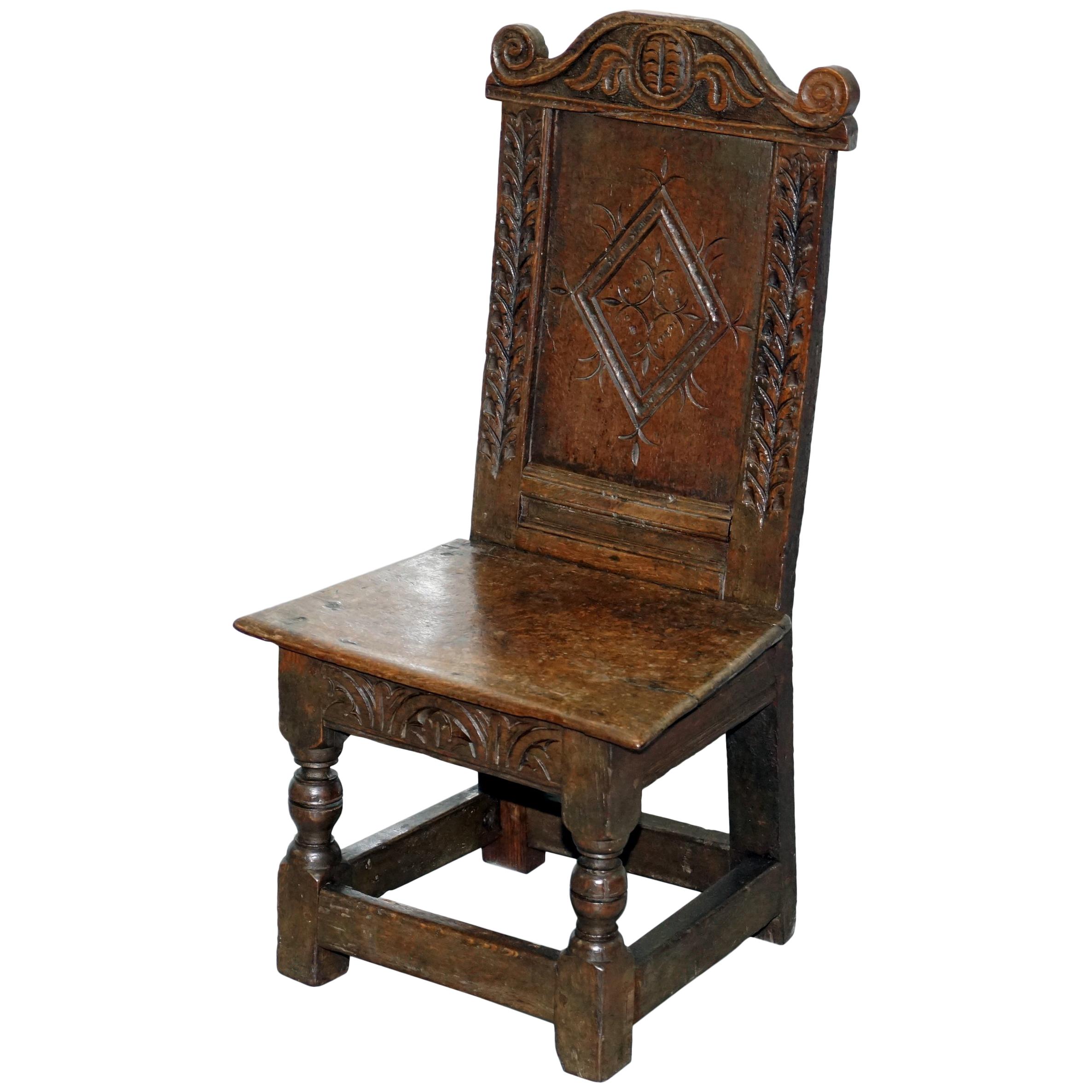
Early furniture in this period from about 1640 to about 1690 took on the Jacobean style which was also prevalent in Europe. Craftsmanship had not yet achieved high degrees of refinement mostly taking on simple rectangular construction. During this period, drawers were added to the box form of early chests, as they evolved gradually into the chest of drawers we know today. In addition to carvings the seventeenth-century craftsman embellished products with bulbous turnings. Banister turnings, split in half and painted black, were often applied between carved panels on chests.
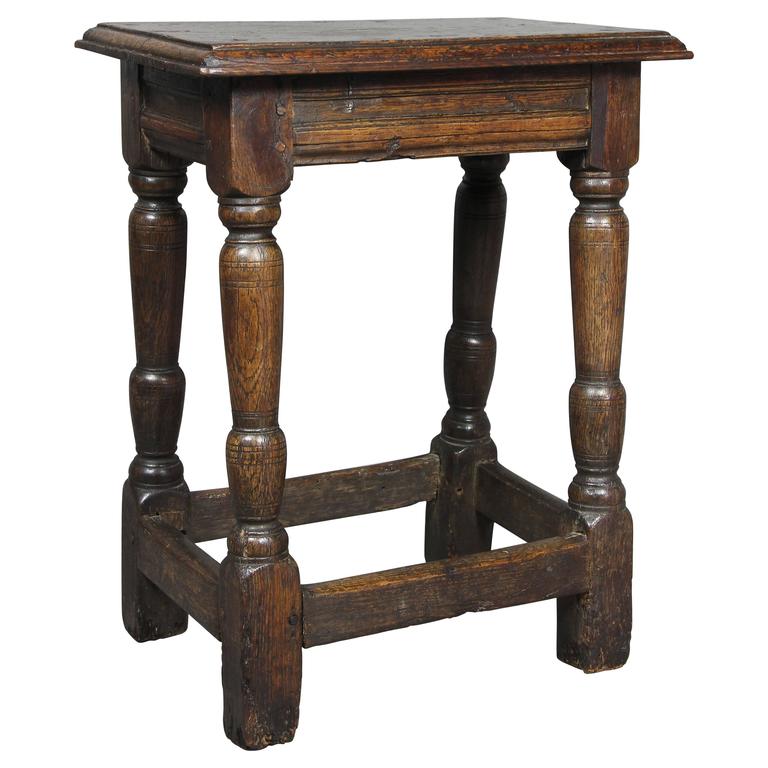
In the late seventeenth century and early eighteenth century, the colonists became more wealthy which created a demand for finely crafted furniture. American cabinetmakers began to use richer woods and modified the Jacobean form to achieve lighter, more graceful designs. These changes in approach reflected the influence of new fashions in English furniture design which was in turn following the French trends.
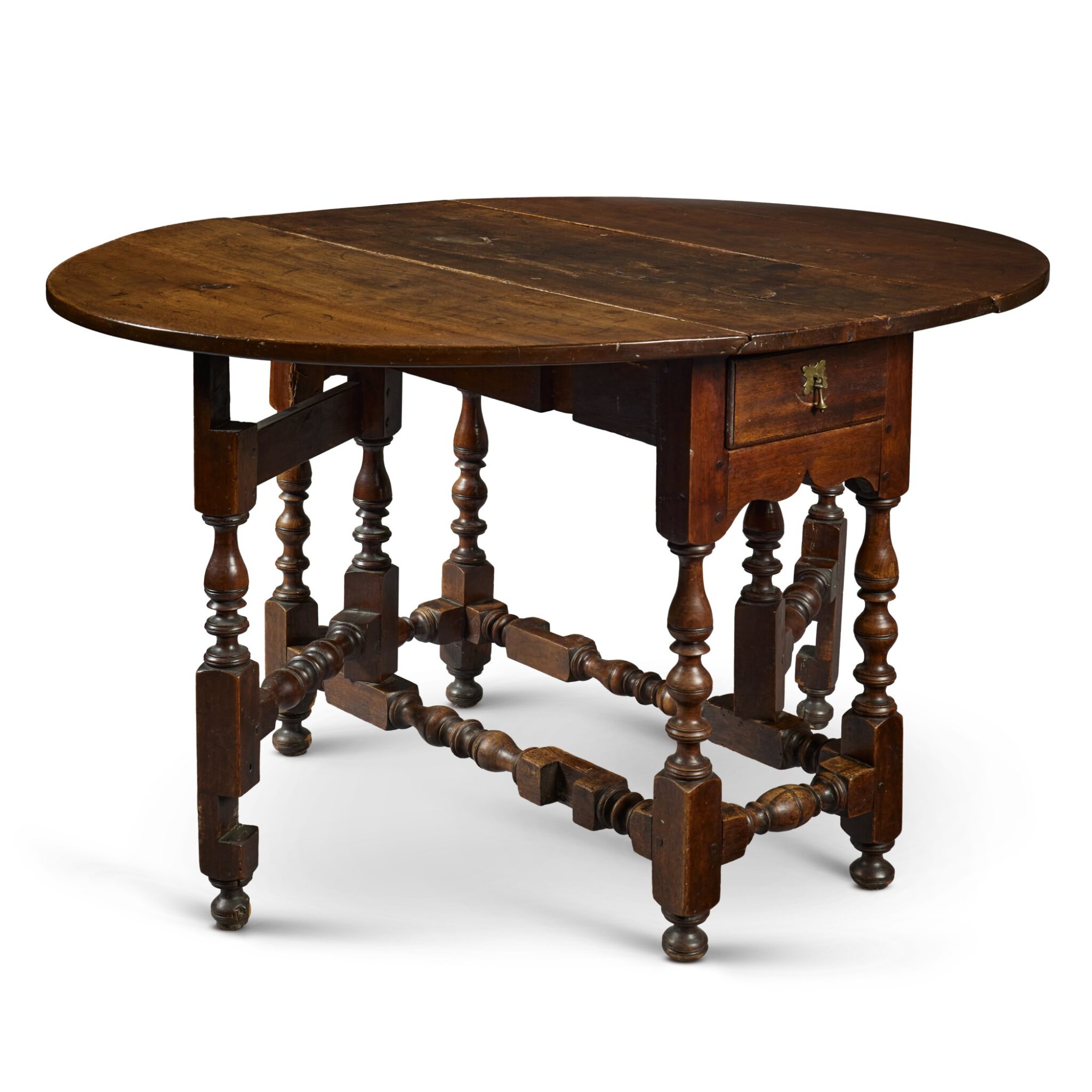
The new style called William and Mary named for England’s late-17th-century co-regents, William III of Orange and Mary II was gaining popularity in England after 1660 and was adopted by American cabinetmakers at the end of the seventeenth century. Although Jacobean decorative techniques such as turning and carving were retained in furniture design, proportions were refined, curves and angles added, and structural members made slimmer avoiding the heaviness of the earlier Jacobean square forms. The bulbous uprights of Jacobean furniture have turned toward more slender turnings. The total effect is one of lightness and refinement.
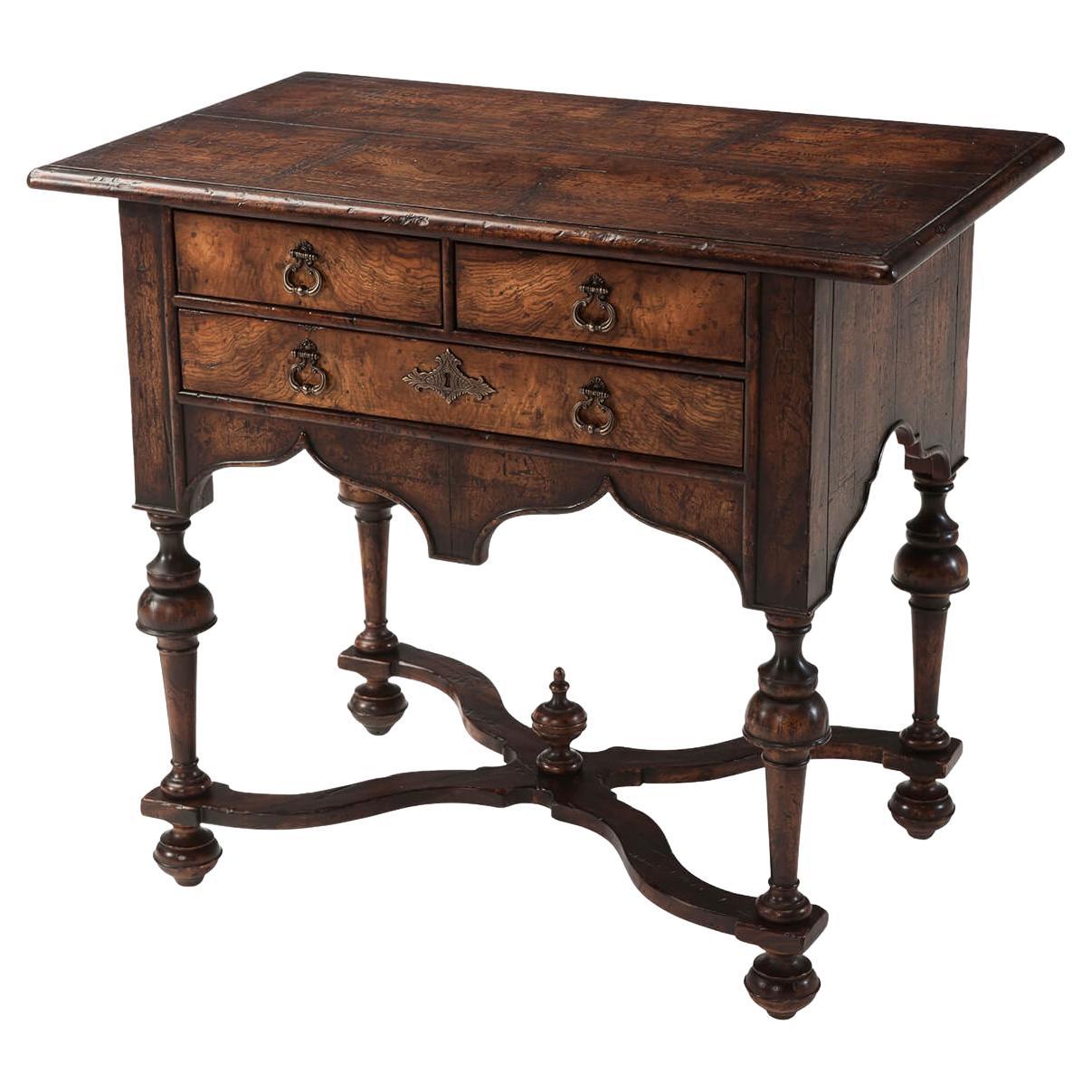
This William and Mary design principles incorporated elements found in Oriental cabinets including richly painted surface decoration similar to oriental lacquered finishes which was referred to as “Japanning”. They also took on an Anglo-Dutch flavor which carried a Baroque aesthetic including elaborate turnings, severe curves, contrasts of color, as well as case pieces with simple flat surfaces and architectural trim. Commonly used materials included indigenous walnut, oak, pine and maple woods.
Furniture from this period is scarce, both because of its significant age, and because production at the time was limited — the result of a relatively small population.
